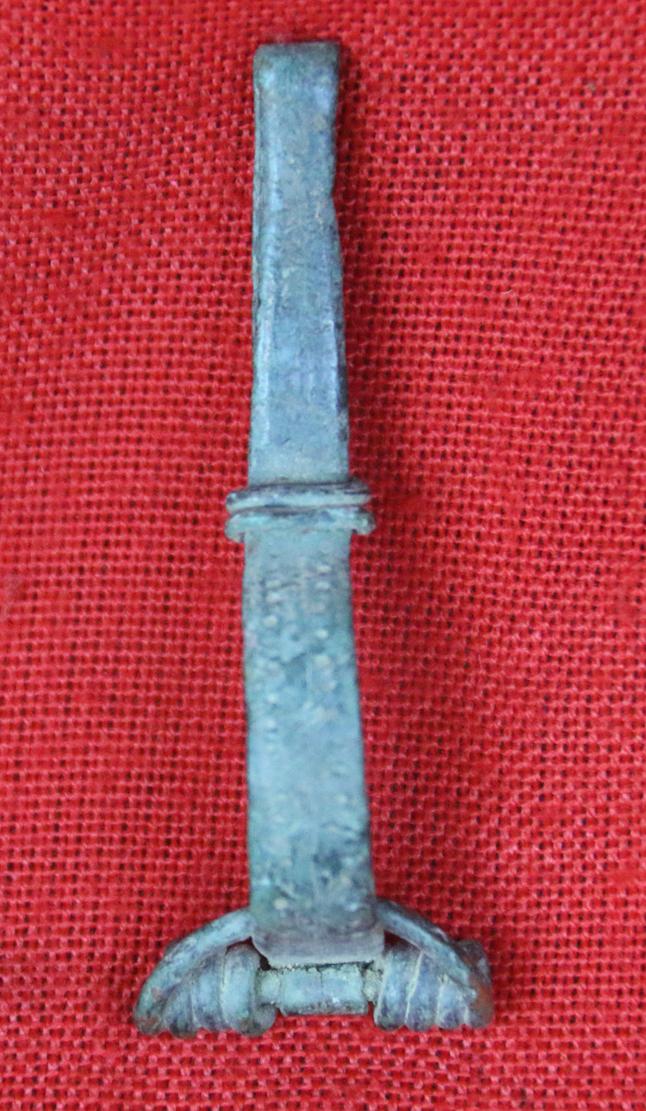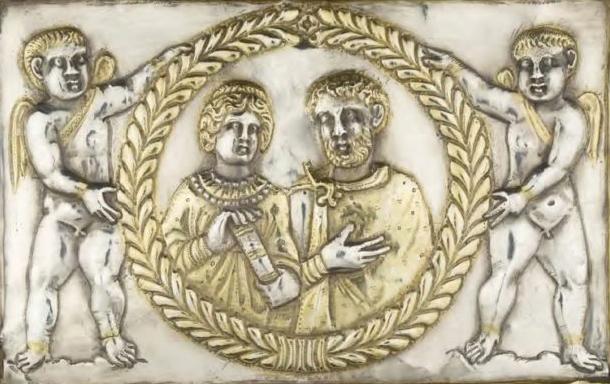Original Ancient Roman ‘Cross-bow” Fibula Bronze Toga Pin Military Issue, Fine Piece For Higher Ranking Figures in the Legion, Such As a Centurion or TribuneBow Fibula with a Folded Spring Hinge, c. Early Imperial - Beginning of 2nd Century.
We acquired a very small collection of different forms of original Roman toga pins, A super, small collection of original, historical, Imperial Roman, Viking, and Crusader's artefacts has just been acquired by us.
Bow Fibulae with spring
The spring winds in one or more loops on one side of the pin and then crosses over, or under, the bow and continues with more loops on the other side. The distinction between the spring-chord crossing over (external) versus under the bow head (internal) can help determine type and age. In some cases the spring-chord is fixed by a hook as it passes over, or under the bow. The spring can have one, two, three, four or even ten or more loops on each side of the bow. Very wide springs tend to have axis-pins inserted to help them retain their shape. In some cases the ends of the axis-pins are fitted with small knobs.
Bow Fibula with the Spring Tendon Below the Bow, c. 250 B.C. - 50 A.D., Rare
The paludamentum was usually worn over one shoulder and fastened with a fibula (ancient version of a safety pin). Arguments abound over what shoulder was exposed, but it seems fairly clear that the garment was fastened loosely enough to move around, The paludamentum was a cloak that was specifically associated with warfare. A general donned one for the ceremonial procession leading an army out of the sacred precinct of the city of Rome and was required to remove it before returning to the city…a sign that he was no longer a general, but a common citizen. The paludamentum or sagum purpura (purple cloak) was the iconic red cloak worn by a Roman general (Legatus) and his staff officers. Originally, it’s distinctive red/purple colour clearly delineated between these officers and the rest of the army, which sported the sagum gregale (cloak of the flock). Although the sagum gregale, worn by the rank and file, started out the colour of the flock (i.e. undyed wool), it seems likely to have transitioned to a coarser version of the sagum purpura by the imperial period (27BCE – 476CE). Outfitting the entire army in red garments would have been a mark of the great wealth of Rome – well, that and the fact that the Romans controlled the source of purple dye by then.
This fibula has a short bilateral spring. It has three loops per side for six total. The spring-chord passes under the bow and is thus an internal chord. lovely condition for age with fine natural colour patination.
Fibula 60mm long
Code: 24047
275.00 GBP








